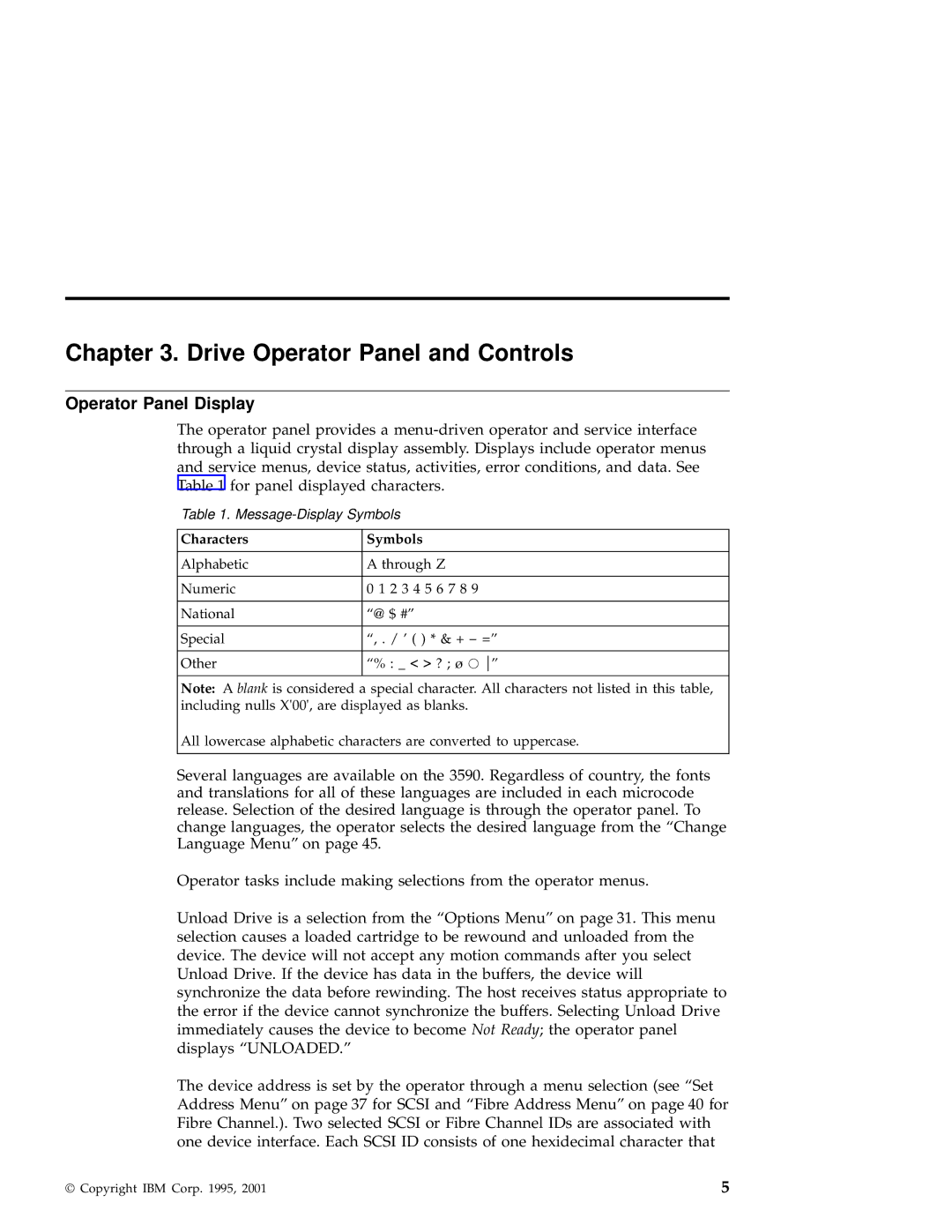
Chapter 3. Drive Operator Panel and Controls
Operator Panel Display
The operator panel provides a
Table 1.
Characters | Symbols |
|
|
Alphabetic | A through Z |
|
|
Numeric | 0 1 2 3 4 5 6 7 8 9 |
|
|
National | “@ $ #” |
|
|
Special | “, . / ’ ( ) * & + − =” |
|
|
Other | “% : _ < > ? ; ø V │” |
|
|
Note: A blank is considered a special character. All characters not listed in this table, including nulls X'00', are displayed as blanks.
All lowercase alphabetic characters are converted to uppercase.
Several languages are available on the 3590. Regardless of country, the fonts and translations for all of these languages are included in each microcode release. Selection of the desired language is through the operator panel. To change languages, the operator selects the desired language from the “Change Language Menu” on page 45.
Operator tasks include making selections from the operator menus.
Unload Drive is a selection from the “Options Menu” on page 31. This menu selection causes a loaded cartridge to be rewound and unloaded from the device. The device will not accept any motion commands after you select Unload Drive. If the device has data in the buffers, the device will synchronize the data before rewinding. The host receives status appropriate to the error if the device cannot synchronize the buffers. Selecting Unload Drive immediately causes the device to become Not Ready; the operator panel displays “UNLOADED.”
The device address is set by the operator through a menu selection (see “Set Address Menu” on page 37 for SCSI and “Fibre Address Menu” on page 40 for Fibre Channel.). Two selected SCSI or Fibre Channel IDs are associated with one device interface. Each SCSI ID consists of one hexidecimal character that
© Copyright IBM Corp. 1995, 2001 | 5 |
